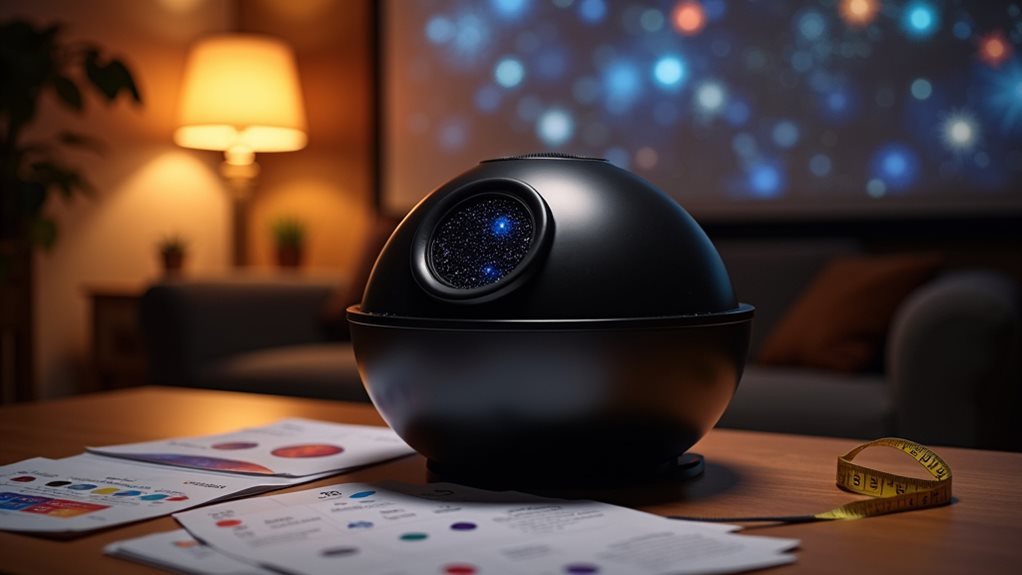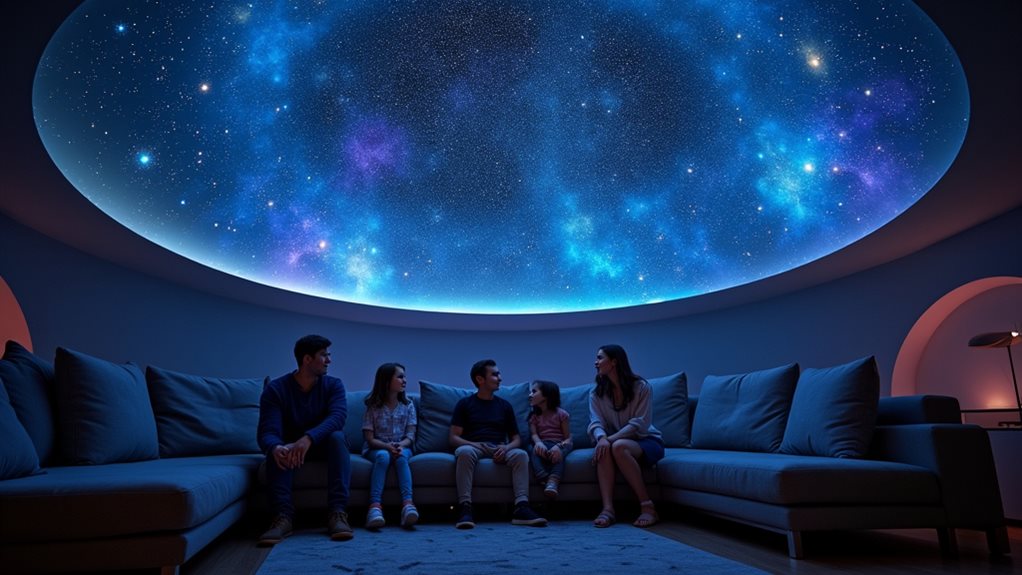When searching online for a home star projector or planetarium you’ll find a LOT of low-cost items available. You might be tempted to buy one, but depending on your expectations, a cheap star projector can leave you feeling disappointed and asking “are any good home planetariums?”
There are lot of good home star projectors, but not many that project an accurate picture of the night sky. Many low-cost devices are more abstract galaxy projectors than planetarium projectors
If an accurate starry sky is what you’re looking for, I would suggest the Sega Homestar available from Amazon.
There are other options available, let’s take a quick look at why this is my recommendation as a good option.
What is a planetarium?
If you’ve ever visited somewhere with a planetarium I bet you’ve sat back in a comfy chair and watched an animated projection with audio narration. They usually provide an immersive environment where you can travel across the universe and view stars and planets up close.
Some shows are designed to teach kids about astronomy. Other shows are designed to entertain people.
In either case, these shows can be intense. For example, many planetarium shows include lasers, lights, and special effects.
There are two main types of planetariums: dome and projection.
Dome planetaria project images onto a dome-shaped screen, and those are the sorts you usually find in museums, libraries etc.
Projection planetaria project images onto walls or screens, and it’s that type you can buy for home use. These tend to be static projections of the night sky.
And these days there are also virtual options, software you can download that gives you the ability to fly around the solar system and learn more about it.
What makes a good home planetarium projector?
A home planetarium is an amazing piece of technology that allows you to see the stars and planets up close.
But what makes a home planetarium stand out from others? Here are five things you should consider when choosing one for yourself.
1. Easy to Use
Home planetaria come in various sizes and shapes. Some are small and portable, requiring no power outlet, while others need to be plugged in.
Some have optional discs that can be loaded in, others have buttons/remotes that control what is being projected.
My general experience is that they’re all easy to use, but if you get one with discs, be sure to supervise young children to ensure they don’t cause any damage when trying to swap discs.
Consumer units are also easy to move around. This means that you can easily transport your home planetarium from room to room and easily pack it away when not in use.
This is especially useful if you plan to use your home planetarium in multiple locations.
2. Affordable
There are many affordable home planetaria available. Prices range from $20 to over $500.
At the lower end of the pricing you tend to find star projectors and nebula projectors rather than something that projects realistic images.
A low-cost star projector is fine for young children or to create a general atmosphere. They usually come with green stars and have different modes, e.g. projecting a blue nebula cloud that can be changed to red, green or a combination of colors.
But if you’re purchasing a home planetarium for yourself, or you specifically want accurate star patterns, then you should consider spending a little bit more.
It’s important to buy a home planetarium that fits your needs.
3. Portable
Most home planetaria are designed to be used indoors and require a power outlet.
However, some are powered via batteries or via USB (and so a portable power bank can be used). As mentioned above, this means some are more portable than others.
This is useful if you plan on putting it in a position away from a power outlet, plan on moving it to different rooms, or even if you want to take your home planetarium camping, to have the night sky projected on your tent, then you should purchase a portable model.
4. Accurate
With so many types of star projectors available to you, one of the key considerations for a good home planetarium is how accurate the projection is.
There are not many units that project an accurate representation of the stars. Instead of real night skies, you often get generic green dots of light and perhaps a nebula effect made of vivid colors.
Even when a device claims to be accurate, be sure to check the image quality. Is the projection a pin sharp or a bit of a smudgy mess?
5. Educational
A good home planetarium is a great way to learn about astronomy. An accurate projection allows you to practice spotting the celestial bodies, and some come with the option of showing either the Northern Hemisphere or the Southern Hemisphere, to ensure the projection matches your night sky.
Note that most low-cost options do not offer an accurate representation and are only for entertainment, rather than educational, purpose.
My suggestion if you’re looking for a good home planetarium
Keeping all of the above in mind, my suggestions for a good home planetarium projector is the Sega Homestar Flux.
Unlike generic star/nebula/galaxy projectors, Sega have created a product that gives you an accurate night sky in the comfort of your own home.
The image quality is very good (the Flux is brighter than the Original), rotation speed can be adjusted, it has a shooting star feature and optional star discs.

One of the optional discs allows you to view the night sky with constellations marked out, helping you to understand where they are in the night sky.
I’ve had some feedback that people consider the lack of remote control to be one of the drawbacks, and it can’t be activated by a timer, I guess you can’t please everyone!




